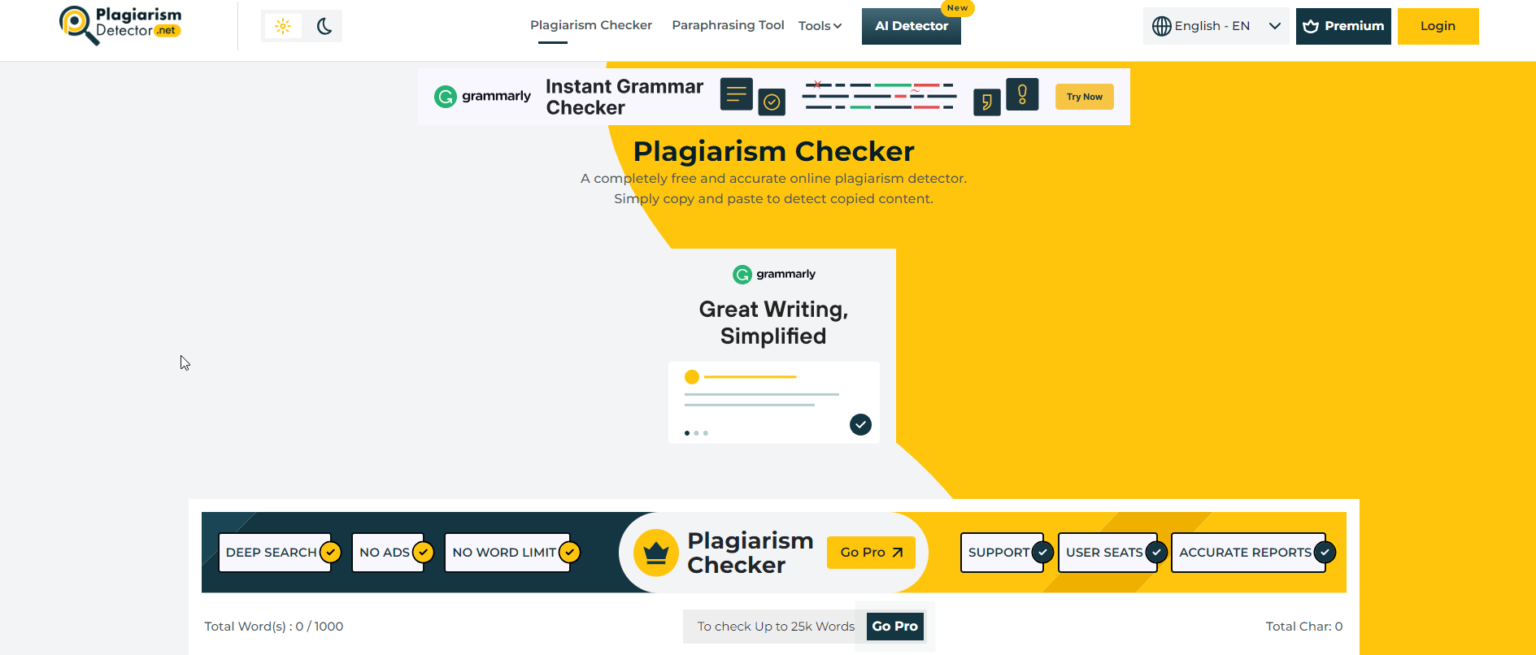Plagiarism is a serious concern in academia, journalism, and content creation. It involves the act of using someone else’s work without proper attribution, which undermines the original author’s rights and can have legal consequences.
To combat plagiarism, various plagiarism checker tools have been developed to help writers and educators detect and prevent the unauthorized use of content.
What is a Plagiarism Checker?
A plagiarism checker is a software tool designed to compare a given text against a database of existing content to identify similarities or copied passages.
These tools analyze the text for matching phrases, sentences, or even entire documents to determine the originality of the content.
By using algorithms and advanced technology, plagiarism checkers can efficiently scan large amounts of text and provide detailed reports on potential instances of plagiarism.
How Do Plagiarism Checkers Work?
Plagiarism checkers utilize sophisticated algorithms to analyze the text provided by the user. These algorithms compare the text against a vast database of online sources, academic publications, and previously submitted work.
The software identifies matching phrases or sentences, highlighting potential instances of plagiarism.
Some plagiarism checkers also offer additional features such as citation checks, grammar suggestions, and originality reports to help users improve the quality of their content.
Benefits of Using a Plagiarism Checker
- Ensuring Originality: The primary benefit of using a plagiarism checker is to ensure that your work is original and free from unauthorized content. By running your text through a plagiarism checker, you can confidently submit your work knowing that it is plagiarism-free.
- Avoiding Accidental Plagiarism: Inadvertent plagiarism can occur when writers unintentionally use someone else’s ideas or phrases without proper attribution. A plagiarism checker can help identify these instances and provide suggestions for proper citation.
- Improving Writing Quality: Plagiarism checkers not only detect copied content but also offer suggestions for improving the overall quality of your writing. By analyzing the text for grammar errors, sentence structure, and coherence, these tools can help you enhance the clarity and effectiveness of your work.
- Protecting Intellectual Property: For content creators and publishers, plagiarism checkers are essential tools for protecting their intellectual property. By identifying instances of content theft, authors can take appropriate action to safeguard their work and uphold their rights.
Types of Plagiarism Checker Tools
There are several types of plagiarism checker tools available, each catering to different needs and preferences. Some popular types include:
- Online Plagiarism Checkers: These web-based tools allow users to upload their text or enter a URL for analysis. Online plagiarism checkers are convenient and accessible, making them ideal for individual writers, students, and educators.
- Desktop Plagiarism Software: Desktop plagiarism software offers advanced features and customization options for users who require in-depth analysis of their content. These tools are suitable for professional writers, researchers, and publishers who need comprehensive plagiarism detection capabilities.
- Integrated Plagiarism Checkers: Some writing platforms and content management systems come equipped with integrated plagiarism checkers. These tools seamlessly integrate with the writing process, providing real-time feedback and suggestions to users as they create content.
Tips for Using a Plagiarism Checker Effectively
- Run Regular Checks: Make it a habit to run your content through a plagiarism checker before submitting or publishing it. Regular checks help you identify and correct any potential instances of plagiarism.
- Understand the Results: Take the time to review the plagiarism report provided by the checker. Understand the nature of the detected similarities and make necessary revisions to your text.
- Use Multiple Tools: To ensure comprehensive plagiarism detection, consider using multiple plagiarism checkers or combining different tools for a more thorough analysis.
- Cite Your Sources: Properly citing your sources is essential to avoiding plagiarism. Include accurate references and citations in your work to give credit to the original authors.
Conclusion
Plagiarism checker tools play a crucial role in combating plagiarism and promoting originality in writing.
By leveraging advanced technology and algorithms, these tools provide users with valuable insights into the authenticity of their content.
Whether you’re a student, writer, or publisher, using a plagiarism checker can help you maintain the integrity of your work and uphold ethical standards in academic and professional settings.
By following best practices and utilizing the right tools, you can enhance the quality of your writing and protect your intellectual property from plagiarism.














